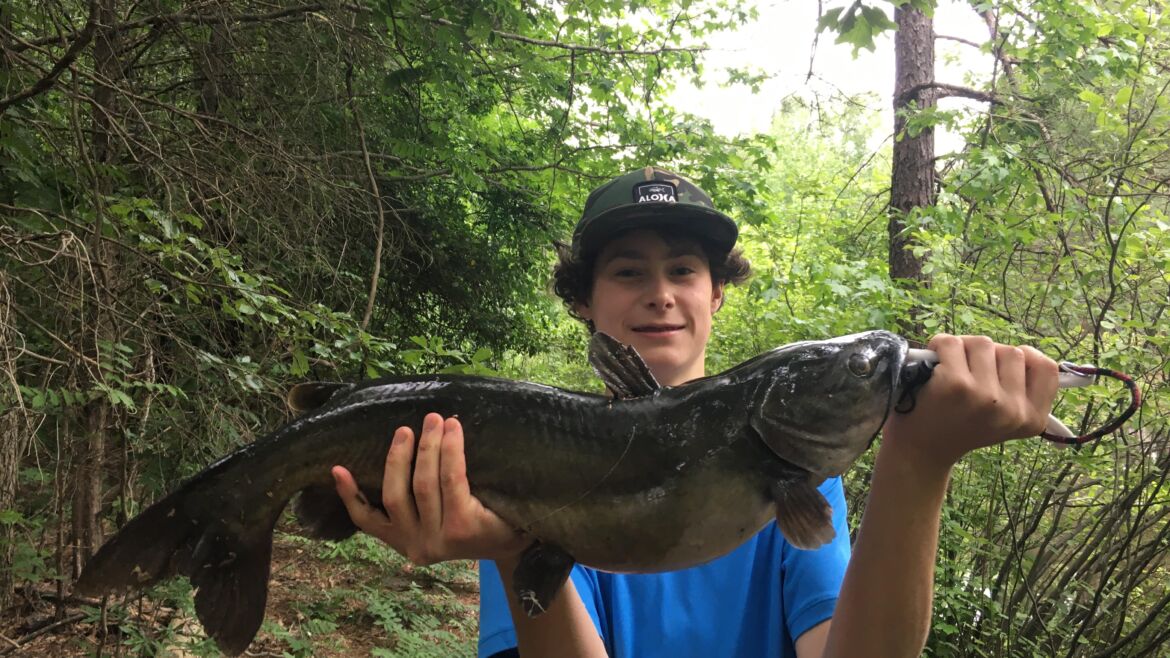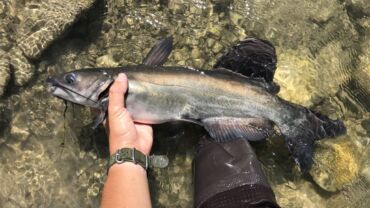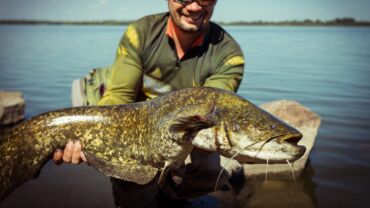While Bass Fishing dominates a lot of the American fishery, Catfish fishing is not far behind at all. Additionally, Catfish fishing is also preferred by a large number of anglers due to the fact that it is a patience game.
You won’t have to spend the whole day casting tons of different lures, instead, you can sit there and relax while you wait for the bite to come to you. Yes, each of these strategies provides very unique challenges—such as struggling to fight a 50-pound catfish—but they are challenges we need to face head-on as anglers nonetheless.
I think I’ve said this a thousand times already, but in order to find the most success in fishing you have to understand the nature and behavior of the Catfish, or as I call it: “becoming one with the Catfish”.
Failure to study and learn the habits of a Catfish and you will find your day on the water a rather unsuccessful one most of the time. However, if you put in a little extra work to dial in your knowledge of these species, then the opportunities for success are endless.
The last thing I will say before diving deeper into the meat of this article is that you have to study all species and situations to maximize your catch rates.
There are a bunch of different Catfish species living in different environments across the US. This being said, you have to be willing to adapt and slightly modify strategies to find success in unusual environments. Catfish are a diverse species so you have to be diverse in your targeting strategies if you want the most success.
The Fishbox App can help you with a lot of these different situations as the fishing app takes a combination of almost 50 factors that play into the bite of the fish.
The Fishbox App allows anglers to get a better grip on their environment allowing for more successful fishing. So don’t wait and download the Fishbox App today for a better fishing experience.
Get your personalized fishing map
Answer a quick quiz and get your own personalized fishing map
How to Catch Catfish: Basic Catfishing Techniques
- Choosing the right gear: Just like any other kind of fishing, choosing the right gear for the job is a huge part of whether or not you will have success—especially when Catfishing. Now when you’re fishing for Catfish, there is a unique balance in choosing gear. You don’t want a rod and reel that is too heavy—that just takes away the fun and makes fighting the fishway easier than it should be. At the same time, you also don’t want to be under-equipped when fishing for Catfish. With other species, you can sometimes get away with lighter tackle because the fish aren’t as powerful, but not with Catfish. Showing up under-equipped to fight a Catfish is like showing up at a gunfight with a sword—you or your gear is gonna pay the price. I’ve seen far too many rods broken from people fighting fish underequipped so don’t make this mistake. In terms of the actual gear I would recommend—it varies. Hopefully, you know the general size of the Catfish that you are targeting. This makes the process much easier. For myself, since I usually target Catfish under 20 pounds in ponds, small lakes, and rivers, my go-to is a 7-foot Ugly Stick GX2 rod with a size 4000 Penn Fierce II reel spooled with a 30-pound braid. The rod is not too heavy so fighting the fish is still enjoyable, but it also has enough backbone to move the bigger Catfish. Additionally, the 30-pound braid offers great line capacity on a size 4000 reel with plenty of strength and drag capability if needed. Now these are just my personal preferences for the Catfish situations I normally have. If I’m fishing a small creek for Catfish, then obviously I’d size down. But if I’m fishing a large dam where big Catfish are known to frequent, then I would need to size up.
Read also: The Ultimate Guide: Best Time to Catch Catfish Revealed
- Bait Options and Techniques: Let’s first start with techniques because it’s how I’m going to classify baits in just a second. The first technique you can use is a bottom rig. Just go to the main line to egg sinker to swivel to the leader to hook—a Carolina Rig. This allows you to keep your bait on the bottom where Catfish are generally on the prowl for food. The second technique is free-lining your bait. Just tie a hook straight to the main line and cast out your bait—this is ideal for live bait that swims and needs extra mobility. The last technique is the bobber rig. Just tie a hook straight to the main line and attach a bobber at your desired length above the hook. The three techniques give you great versatility in your approach and allow you to cover most of the water column with baits. When fishing for Catfish myself, I will often employ a combination of these rigs to maximize my chances of hooking one. Now that we have techniques out of the way, let’s talk about the bait. First off, lures are never a good way to target Catfish. Catfish are bottom feeders and scavengers—very rarely will they go after an artificial bait. This being said, for the sake of this article we’re just going to talk about bait. Here are some of the most common baits for catfish:
- Live Bluegill: An unparalleled Catfish bait. Catfish eat bluegill naturally all the time, so they work extremely well on any of the three techniques mentioned above. My favorite way to fish them is to fish them under a bobber as the commotion of the moving bobber draws the Catfish.
- Worms: While less effective than bluegill, worms can still deliver the goods. Fish these on bobbers or a bottom rig for the best results.
- Meats (hotdogs, beef jerky, liver, etc): I have had my fair share of success with various meats, especially the hotdog. Fish these on bottom rigs for best success.
- Dead/Cut Bluegill, Shad, etc: Another great bait for targeting different species of Catfish. Cut baitfish works well on bottom rigs and I personally have seen it work on bobber rigs as well.
- Hotspots for Catfish:
- Blue Catfish: These Catfish prefer deeper holes and areas where the current is a little bit stronger. Often found near dams in the deeper water as well.
- Channel Catfish: These Catfish love structure as well as deep water. You can commonly find them around submerged trees and logs as well as rocks.
- Flathead Catfish: Flathead Catfish are more similar to the Channel Catfish as they prefer the same cover with submerged logs and trees.
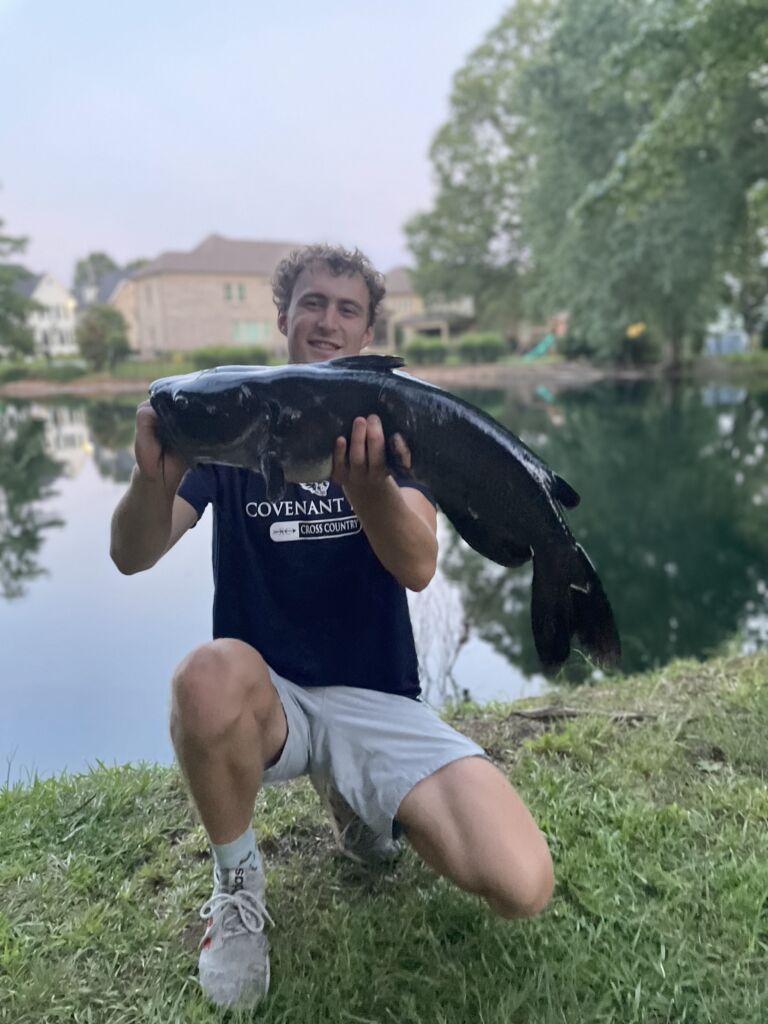
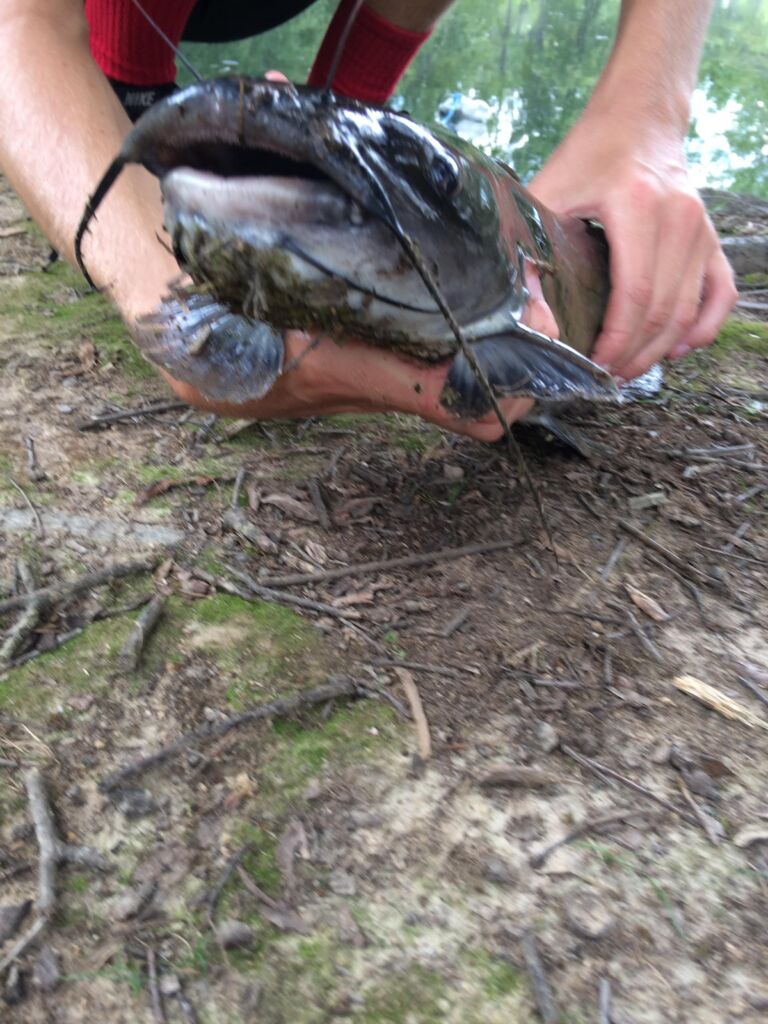
- Reading the Water: Being able to read the water is a very important part of being a great Catfish fisherman. You must be able to identify places where Catfish are more likely to be in order to have a better shot at hooking one yourself. When you get to your spot, pay attention to things you see in the water like logs and trees where Catfish would be hiding. In addition, look for rock piles, boulders, and deeper holes in the water (this is fairly easy with a fish finder). The only other recommendation I would give is with regard to currents in rivers and other moving bodies of water. Look for deep pools and eddies where Catfish are lying in wait for prey to float by. Find these spots and then target them to see what they are holding.
Advanced Catfishing Techniques
- How Seasons Affect the Catfish Bite: Catfish tend to follow the same general bite patterns as most other species. Spring and Summer are very strong with a slower Fall and Winter. As the water heats up in the Summer, baitfish both become more active and plentiful during spawns. Additionally, Catfish have lots more energy in the Spring and Summer making them less lethargic and more likely to be on the prowl for bait. Now the Catfish bite doesn’t completely dry up in Fall and Winter, but it does significantly slow due to the Catfish having less energy and retreating to deeper water.
- Night Fishing Tactics: Since you’re using bait for Catfish and not artificials, night fishing really doesn’t differ that much from the daytime. The only thing I would suggest would be glow-in-the-dark or light-up bobbers so you can see your baits a little easier. Additionally, you’re gonna want some sort of lights on the shore or boat so you can monitor other rods that aren’t lit up by a bobber. Catfish tend to come out at night to hunt, so don’t be surprised if there is more action than you initially expected.
- Using Electronics to Find Catfish: I mentioned this earlier, but using electronics like a fish finder to help locate Catfish holes can be a game changer. On your screen, look for dramatic dips and holes where Catfish like to hide. In addition, some of the newer sonars have Livescope which allows you to see objects underwater like trees, roots, and other places where Catfish might be hiding.
- How Weather Affects the Catfish Bite: To be really honest, weather, aside from temperature, doesn’t have too much of an effect on the bite—unless you’re fishing moving water. Catfish are scavengers and hunt with their sense of smell more than anything else. So even if the water is murky from rain, you shouldn’t be too worried. However, if you are fishing in moving water like a river, rain can heavily affect the bite as conditions can quickly turn unfishable due to rising water.
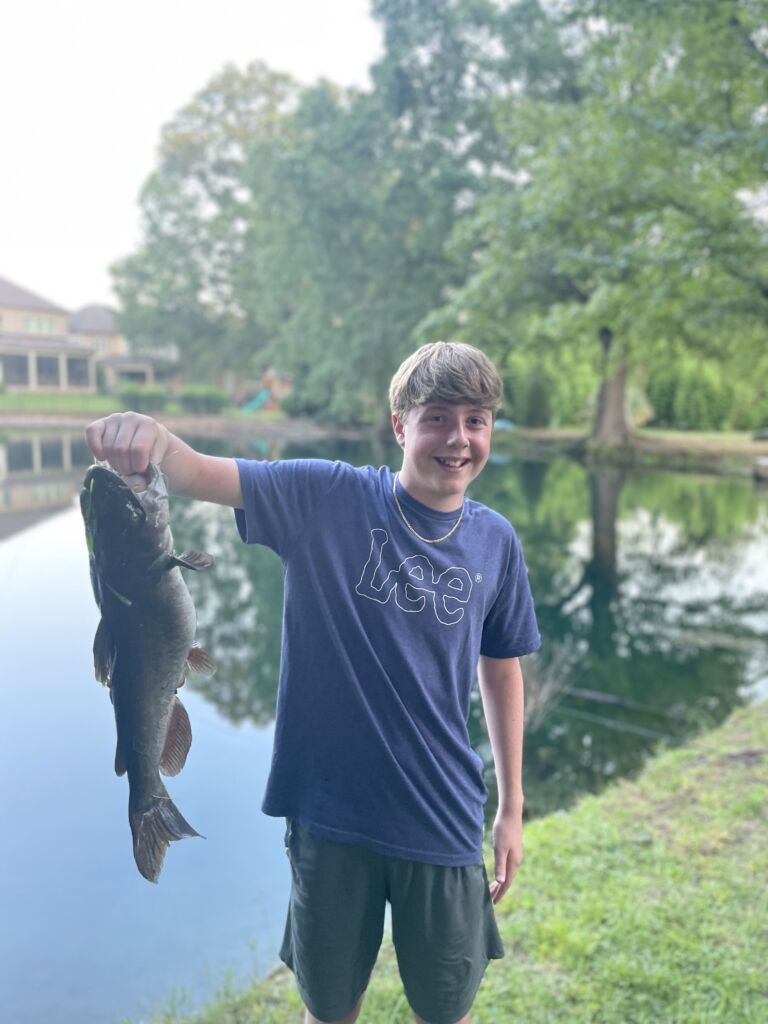
Catching Catfish: Safety Measures and Regulations
As we get close to the end of this article, there are a few safety precautions that I think need to be addressed to ensure a fun day on the water. First, the safety of your rod and reel (and you). Catfish are notoriously strong and have pulled countless rods in the water never to be seen again. When fishing for these fish, especially the big ones, make sure you have your rods properly secured. Additionally, make sure you are secure as well, especially if you are fishing from a kayak. I’ve seen plenty of videos of people getting their kayak flipped because of Catfish so be careful and pay attention when you’re fishing. The second and final piece of safety advice that I would offer would be to stay away from the barbs behind the Catfish’s pectoral and dorsal fins. They are extremely sharp and are very painful if you get pinned by one. One more note of caution, don’t ever try to hold the catfish super close to your body because of their spines. In rare cases, they have been known to actually kill people. Don’t become a statistic just because you want to bear hug a Catfish. Yes, I know there is a proper way to bear hug a Catfish, but if you don’t know how to do this, then don’t do it. In addition to the safety of you and your gear, we also need to keep in mind the safety of the fish we catch. This is why it is imperative that we follow local fishing regulations. As much as many of us don’t like to hear it, the regulations are in place for the safety of the fish population and the sport. If we cannot follow these regulations, then populations will suffer and the fishery we love and enjoy now will not exist down the road. This being said, put your feelings aside and follow the rules, or risk the destruction of yet another fishery.
Get your personalized fishing map
Answer a quick quiz and get your own personalized fishing map
Success Stories and Tips from Pierce Latta
Catfishing Tips and Tricks:
- If you are fortunate enough to have multiple different rods to go Catfishing with, use this to your advantage and make a fan of lines around your body of water. This will obviously cover more water and give you a greater chance of success.
- Use different baits. I cannot emphasize this enough. Catfish will eat almost anything, but you’ve gotta figure out what they want the most. On one rod, use a bluegill, on another, use a hotdog, etc.
- Be patient. You’ve got to be willing to put in the work. It will sometimes take hours to get a bite and you’re just going to have to wait for a bite. Don’t get discouraged if the bites don’t come quickly.
My Favorite Catfish Story:
I could tell you numerous different stories about my experiences with Catfish, but my favorite was definitely when I was with some of my boys and accidentally hooked one way too big for our rod. It was getting dark one night and my friends and I were just screwing around a pond with some night crawlers, a bobber, and a super tiny hook. It was getting dark, so we were about to head in after a successful day of catching bluegill. However, I told them we should take one more cast. I threw it no more than 10 feet off the bank and two seconds later the bobber just disappeared underwater. I set the hook on my tiny 5-foot rod with a 4-pound line and that thing ripped. He got so close to spooling us 3 times that I had to lean out over the water in the pond and pinch the spool while my friends were holding me back from falling in. No joke, 30 minutes later we landed a stud 10-pound Channel Catfish. We were as outmatched as we could get and somehow managed to land a monster Catfish for our standards. All this being said, let this story be a lesson to you in fishing. Sometimes you just gotta go out and wing it a little undermatched. I know I said earlier that it is important to come prepared when dealing with Catfish, but if you are not afraid to put your gear to the limits, give it a try. There is nothing more rewarding than being severely undermatched and then landing a big fish.
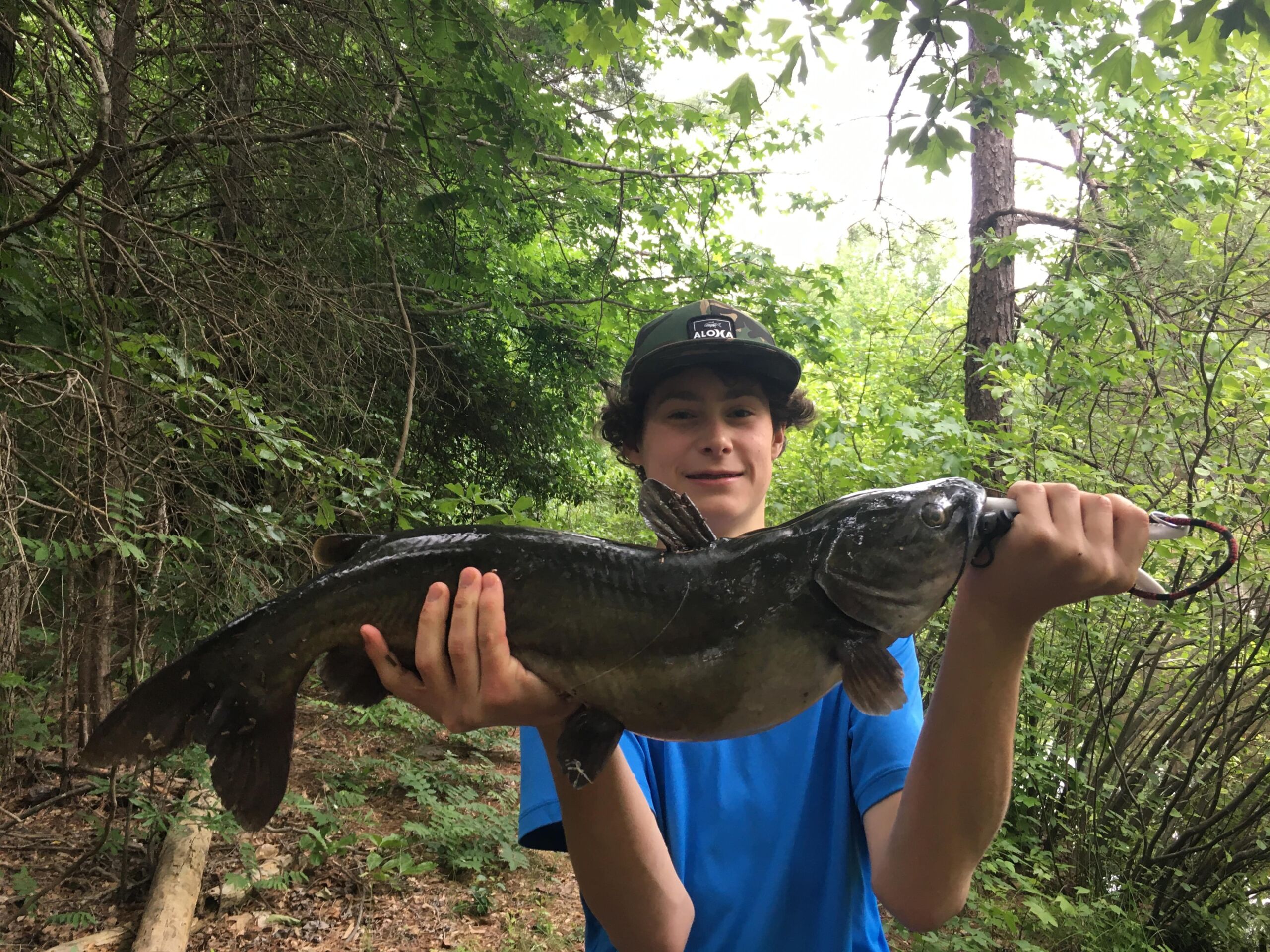
Conclusion
I hope after reading this article you feel far more prepared to catch Catfish than you were before. I’ve shared everything I know about Catfish with you guys and hope that this knowledge will allow you to have some great days on the water. Additionally, while this knowledge is important, downloading the Fishbox App can be just as important due to the research on the bite that is already done for you. Take advantage of this fishing data and let it help you become a better angler. Download the app for fishing today. Remember to be versatile in your approaches to catching these Catfish. Experiment with different rigs, baits, and locations in order to find your own stride for success. I hope you have enjoyed reading this article and as always, tight lines!
Photo Source: All photos in this article were provided by expert Pierce Latta.
Visit his Instagram profile.
Subscribe to his YouTube channel.
